Here you’ll find a selection of Feature Films and Documentaries. Some of them were filmed during the Thirties but the majority are either set then or about that time period. We’ve tried to include something for everyone.
Click on the titles to be taken to the Library’s Online Catalog.
 Amélie – Amélie is a young woman who had a decidedly unusual childhood; misdiagnosed with an unusual heart condition, Amélie didn’t attend school with other children, but spent most of her time in her room, where she developed a keen imagination and an active fantasy life. Despite all this, Amélie has grown into a healthy and beautiful young woman who works in a cafe and has a whimsical, romantic nature. She decides to step into the lives of others around her to help them out. (2002, 122min, R)
Amélie – Amélie is a young woman who had a decidedly unusual childhood; misdiagnosed with an unusual heart condition, Amélie didn’t attend school with other children, but spent most of her time in her room, where she developed a keen imagination and an active fantasy life. Despite all this, Amélie has grown into a healthy and beautiful young woman who works in a cafe and has a whimsical, romantic nature. She decides to step into the lives of others around her to help them out. (2002, 122min, R)
Angela’s Ashes – Life in impoverished Depression-era Ireland holds little promise for young Frank McCourt, the oldest son in a tightly-knit family. Living by his wits, cheered by his irrepressible spirit, and sustained by his mother’s fierce love, Frank embarks on an inspiring journey to overcome the poverty of his childhood and reach the land of his dreams: America. (2000, 145min, R)
Annie – The story of the comic strip character Little Orphan Annie, who is adopted by billionaire “Daddy” Warbucks. (1981, 127min, PG)
Brideshead Revisited – A Londoner of lower class befriends and begins a romantic relationship with an aristocrat that becomes complicated when the aristocrat introduces his new friend to his sister. (2009, 133min, PG-13)
 Bright Young Things – During the 1930’s, the world of the British uppercrust society is one of nightclubs, dancing, jazz and speed. Their lives revolve around an endless series of parties and pleasure seeking – including motorcars, jazz bands, gossip journalism, drugs, gramophones … Inevitably, however, the frantic pace of living begins to take its toll and one by one they begin to crash and burn in the search for newer and faster sensations. (2005, 105min, R)
Bright Young Things – During the 1930’s, the world of the British uppercrust society is one of nightclubs, dancing, jazz and speed. Their lives revolve around an endless series of parties and pleasure seeking – including motorcars, jazz bands, gossip journalism, drugs, gramophones … Inevitably, however, the frantic pace of living begins to take its toll and one by one they begin to crash and burn in the search for newer and faster sensations. (2005, 105min, R)
Brighton Beach Memoirs – Fifteen-year-old Eugene Jerome is trying to uncover life’s mysteries in this adaptation of a Broadway hit about growing up in Brooklyn during the late 1930’s. (1986, 110min, PG-13)
City Lights – A tramp wins the love of a blind flower girl and attempts to obtain money from a millionaire to help her regain her sight. (1931, 186min, G)
Citizen Kane – Story of the rise and fall of a great man as the result of his accumulation of wealth and subsequent isolation from the world. Loosely based on the life of newspaper tycoon William Randolph Hearst. (1941, 232min, PG)
Curious Case of Benjamin Button – Benjamin Button is a not-so-ordinary man who began his life under unusual circumstances. Born in his eighties at the end of World War I, Benjamin ages backwards. (2009, 165min, PG-13)
The Devil’s Backbone – During the Spanish Civil War, young Carlos is abandoned at a completely isolated orphanage. The tensions therein have been building for years, exacerbated by the unexploded bomb resting menacingly in the courtyard. Bullies scheme, tempers flare, and a ghost that visits Carlos’s bed seems to be the key to it all. (2002, 103min, R)
The English Patient – Based on the novel by Michael Ondaatje, a complicated WWII saga told in flashback sequences. Best Picture, Best Director-Anthony Minghella, and Best Supporting Actress-Juliette Binoche. Includes exclusive bonus material and special packaging. (1996, 162min, R)
 Frida – The life of artist Frida Kahlo, from her humble upbringing to her worldwide fame and controversy that surrounded both her and her husband, Diego Rivera. (2002, 122min, R)
Frida – The life of artist Frida Kahlo, from her humble upbringing to her worldwide fame and controversy that surrounded both her and her husband, Diego Rivera. (2002, 122min, R)
Gandhi – Tells the story of Gandhi’s adult life, when he led an entire country to freedom, using non-violent methods. (1982, 190min, PG)
Good – When John Halder’s latest novel is enlisted by the Nazi party to push their agenda, his career and social standing instantly advance. But after learning of the Reich’s horrific plans for the future, John must decide whether to do nothing and keep his fame or risk losing everything. (2009, 96min, R)
A Good Woman – A notorious seductress enters a gossipy society and entices the husband of a faithful young woman, delighting the gossips and prompting a series of unexpected consequences. (2006, 93min, PG)
 Harlem Nights – A night club owner and his son fight to keep the mob and corrupt police from putting them out of business. (1989, 115min, R)
Harlem Nights – A night club owner and his son fight to keep the mob and corrupt police from putting them out of business. (1989, 115min, R)
The Hindenburg – A dramatization of the journey and crash of the German dirigible, the Hindenburg. (1975, 155min)
I Capture the Castle – In a classic English story, Cassandra Mortmain chronicles in her diary what happens to her eccentric family when a young American man inherits the local estate. The bittersweet love story that ensues is far more complicated than she ever imagines. (2003, 113min, R)
Indochine – Set in French Indochina in the 1930s as the Vietnamese begin to rebel against French colonialism. Dramatizes the last years of French rule through the relationship between plantation owner Éliane, French by birth but born and raised in Indochina, and her adopted daughter Camille, an orphaned Annamese princess who becomes a Vietnamese revolutionary and representative at the Geneva Conference after having a child by French officer Jean-Baptiste, Éliane’s past lover. (1992, 156min, NR)
J. Edgar – J. Edgar Hoover was head of the Federal Bureau of Investigation for nearly 50 years. Hoover was feared, admired, reviled and revered, a man who could distort the truth as easily as he upheld it. His methods were at once ruthless and heroic, with the admiration of the world his most coveted prize. But behind closed doors, he held secrets that would have destroyed his image, his career and his life. (2011, 137min, R)
 King Kong – Young and beautiful actress Ann Darrow is from the world of 1930s vaudeville, who is down on her luck. She meets Carl Denham, an over-ambitious filmmaker, who brings her on an exploratory expedition to a remote island where she finds compassion and the true meaning of humanity with an ape Kong. (2005, 188min, PG-13)
King Kong – Young and beautiful actress Ann Darrow is from the world of 1930s vaudeville, who is down on her luck. She meets Carl Denham, an over-ambitious filmmaker, who brings her on an exploratory expedition to a remote island where she finds compassion and the true meaning of humanity with an ape Kong. (2005, 188min, PG-13)
Ladies in Lavender – The peaceful life of two aging sisters is shattered when they take in a young Polish violinist who they find injured after having been washed ashore near their coastal English home. Their town is suspicious of any visitors and things get worse when he befriends a Russian woman who is visiting the town. (2004, 104min, PG-13)
Lawrence of Arabia – The story of T.E. Lawrence, the heroic and troubled man who organized the Arab nations to fight the Turks in World War I and then, having reached a pinnacle of power in Mideast politics, retired to postwar military obscurity. (1962, 227min, PG)
The Legend of Bagger Vance – The protagonist of this metaphysical fable is Rannulph Junah, Southern aristocrat and World War I hero. In a tournament in Savannah, he defeats two golf pros by following the teachings of his guru, Bagger Vance, a black mystic serving as his caddie. (2000, 127min, PG-13)
 Malcolm X – Screen version of the life of Malcolm X, who through his religious conversion to Islam, found the strength to rise up from a criminal past to become an influential civil rights leader. (1992, 201min, PG-13)
Malcolm X – Screen version of the life of Malcolm X, who through his religious conversion to Islam, found the strength to rise up from a criminal past to become an influential civil rights leader. (1992, 201min, PG-13)
Memoirs of a Geisha – In 1929, an impoverished nine-year-old named Chiyo is sold to a geisha house in Kyoto’s Gion district and subjected to cruel treatment from the owners and the head geisha Hatsumomo. Her stunning beauty attracts the vindictive jealousy in Hatsumomo and she is rescued by Hatsumomo’s bitter rival, Mameha. Under Mameha’s mentorship, Chiyo becomes the geisha named Sayuri, trained in all the artistic and social skills a geisha must master in order to survive in her society. As a renowned geisha, she enters a society of wealth, privilege, and political intrigue. (2006, 145min, PG-13)
Murder Inc. – In the violent burroughs of 1930s New york, gangs spawned by Prohibition have found new work … as racketeers and contract killers. The most vicious of these is Murder, Inc., the merciless Brownsville, Brooklyn syndicate. As their reign of terror spreads, only one cop has the nerve to methodically track them down, determined to destroy them by any means necessary! (1960, 103min, NR)

The Natural – An unknown middle-aged batter named Roy Hobbs with a mysterious past appears out of nowhere to take a losing 1930s baseball team to the top of the league in this magical sports fantasy. With the aid of a bat cut from a lightning struck tree, Hobbs lives the fame he should have had earlier when, as a rising pitcher, he is inexplicably shot by a young woman. (1984, 138min, PG)
O Brother, Where Art Thou? – Convict Ulysses Everett McGill and two others escape the chain gang to find a stolen treasure, but end up having a odyssey of strange adventures. (2000, 103min, PG-13)
Papillon – Thrilling adventure of an escape from a French Guiana prison. (1973, 150min, PG)
Pride of the Yankees – Tells the tale of Lou Gehrig, a Hall-of-Fame baseball player for the New York Yankees whose life was cut short by ALS. (1942, 128min, NR)
Public Enemies – Focuses on the true story of FBI agent Melvin Purvis and his pursuit of criminals John Dillinger, Baby Face Nelson, and Pretty Boy Floyd during the Great Depression. (2009, 140min, R)
 Rabbit Proof Fence – In 1931, Molly and her younger cousins, Gracie and Daisy, were three half-caste children from Western Australia who were taken from their parents under government edict and sent to an institution, were taught to forget their families, their culture, and re-invent themselves as members of “white” Australian society. The three girls begin an epic journey back to Western Australia, travelling 1,500 miles on foot with no food or water, and navigating by following the fence that has been build across the nation to stem an over-population of rabbits. (2002, 93min, PG)
Rabbit Proof Fence – In 1931, Molly and her younger cousins, Gracie and Daisy, were three half-caste children from Western Australia who were taken from their parents under government edict and sent to an institution, were taught to forget their families, their culture, and re-invent themselves as members of “white” Australian society. The three girls begin an epic journey back to Western Australia, travelling 1,500 miles on foot with no food or water, and navigating by following the fence that has been build across the nation to stem an over-population of rabbits. (2002, 93min, PG)
Road to Perdition – Chicago hitman Michael Sullivan and his young son become targets of another hitman from the same mob. Sullivan and his son embark on a journey of
survival and revenge. (2002, 117min, R)
The Sound of Music – As Nazism takes over Austria, Maria, a spirited young postulant, leaves the convent to act as a governess for the seven musically-talented children of widower Captain von Trapp. (1965, 175min, G)
Tea with Mussolini – Tells the tale of British women living in Florence prior to World War II. (1999, 117min, PG)
To Kill a Mockingbird – The setting is a dusty Southern town during the Depression. A white woman accuses a black man of rape. Though he is obviously innocent, the outcome of his trial is such a foregone conclusion that no lawyer will step forward to defend him–except the town’s most distinguished citizen. His compassionate defense costs him many friendships but earns him the respect and admiration of his two motherless children. (1962, 130min, NR)
The Untouchables – A fierce, larger-than-life depiction of the mob warlord who ruled Prohibition-era Chicago and the law enforcer who vowed to bring him down. (1987, 119min, R)
 Victor/Victoria – A poverty-stricken singer in Depression-era Paris becomes convinced that the only way she can earn a living on the nightclub circuit is to masquerade as a man who impersonates women. Then she meets the man of her dreams. (1982, 133min, PG)
Victor/Victoria – A poverty-stricken singer in Depression-era Paris becomes convinced that the only way she can earn a living on the nightclub circuit is to masquerade as a man who impersonates women. Then she meets the man of her dreams. (1982, 133min, PG)
The Way We Were – The romance and marriage of opposites– the love that binds them together and the differences that tear them apart. A love story from college to Hollywood in the thirties, forties, and fifties. (1973, 118min, PG)
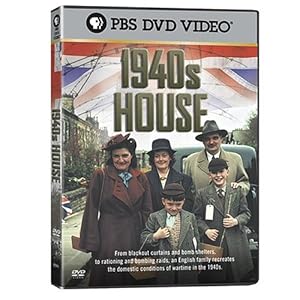 Decades Documentaries – 1940s House (1940s) – Tuesday, June 19 @ 2PM – One modern family takes on the challenge of domestic life on Britain’s home front in this recreation of a World War II household. This time-travel experiment covers the period from the outbreak of the war in 1939 to Victory Day in 1945, compressing the events of six wartime years into nine weeks. While the military threat is metaphorical, the privations are real and the pressure creates tensions nonexistent in modern society.
Decades Documentaries – 1940s House (1940s) – Tuesday, June 19 @ 2PM – One modern family takes on the challenge of domestic life on Britain’s home front in this recreation of a World War II household. This time-travel experiment covers the period from the outbreak of the war in 1939 to Victory Day in 1945, compressing the events of six wartime years into nine weeks. While the military threat is metaphorical, the privations are real and the pressure creates tensions nonexistent in modern society. Decades Movies: Maltese Falcon (1940s) – Friday, June 22 @ 2PM – Detective Sam Spade goes in search of a priceless statuette after the death of his partner. (1941, 100min, NR)
Decades Movies: Maltese Falcon (1940s) – Friday, June 22 @ 2PM – Detective Sam Spade goes in search of a priceless statuette after the death of his partner. (1941, 100min, NR)










 Decades Documentaries – Life in the Thirties (1930s) – Tuesday, June 12 @ 2PM
Decades Documentaries – Life in the Thirties (1930s) – Tuesday, June 12 @ 2PM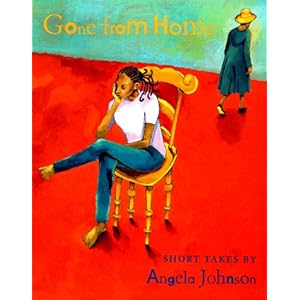 Gone from Home By Angela Johnson
Gone from Home By Angela Johnson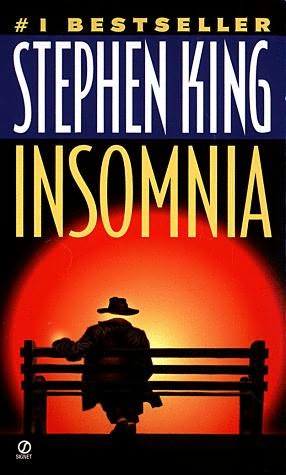 Insomnia By Stephen King
Insomnia By Stephen King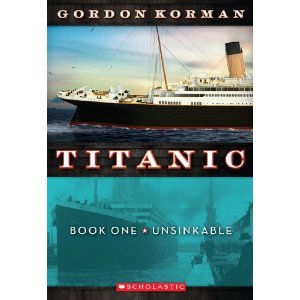





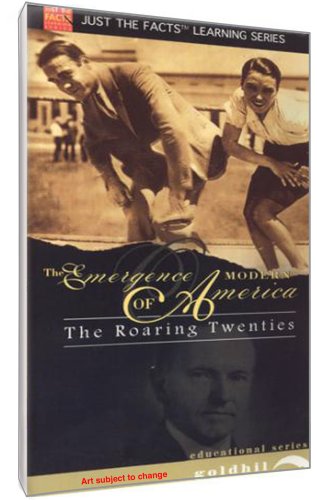 Decades Documentaries – The Roaring Twenties (1920s) – Tuesday, June 5 @ 2PM
Decades Documentaries – The Roaring Twenties (1920s) – Tuesday, June 5 @ 2PM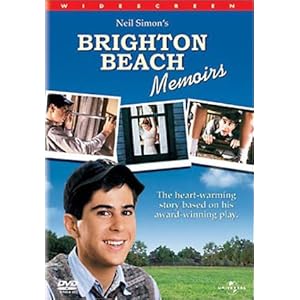 Decades Movies: Brighton Beach Memoirs (1930s) – Friday, June 8 @ 2PM
Decades Movies: Brighton Beach Memoirs (1930s) – Friday, June 8 @ 2PM